As a gardening lover, you may not like to leave your chain link fence alone. So growing ivy on chain link fence is a great way to hide your chain link fence while adding a natural beauty on it.
Here are the exact steps to grow ivy on a chain link fence.
- Step 1: Clean the ground and dig a planting hole
- Step 2: Prepare the soil to grow ivy
- Step 3: Plant the ivy plant
- Step 4: Water it as much as possible
- Step 5: Train ivy to run on chain link fence
Ivy is a plant that growing very quickly. But training them to grow well on a chain link fence is a bit different process. Keep reading to know the best way you can do it.
Table of Contents
Required conditions to grow ivy on chain link fence
Before you start growing ivy on a fence, there are some conditions that you have to provide for them.
Environmental conditions
Ivy plants usually need a temperature between 60 F to 70 F to grow well.
But sometimes species like English ivy can tolerate 35 F without any harm on them.
As same as the clod temperature, ivy needs a high humidity air movement.
Most of the time they will also have enough air humidity to breath in colder climates.
As same as humidity and temperature, sunlight is doing a major role in a process of growing any plant.
But when we consider growing ivy, cause it’s a colder-loving plant they won’t expect many things from the sun.
Usually, many ivy species require just the brightness of the sunlight, not the heat of it.
Therefore partial shade is the best lighting condition to grow ivy on a chain-link fence.
Required conditions for soil
You have to be careful of what kind of soil you use, when you are growing any plant on your garden.
Various kinds of plants need different types of soil conditions.
So ivy plant requires soil with a Ph around 5.5 to 6.5, which is slightly high in acidic.
Unlike other plants you are growing in your backyard, ivy plants don’t like to grow their roots on drained soil.
Instead, they love to have moisture on their roots as long as they can.
But I don’t want to mislead you to flood water onto your ivy plant and make it waterlogged.
I tried to mean was, you don’t need to wait to water the plant until the soil is completely dry.
Just encourage the soil to trap a little moisture on them.
Don’t worry.
You don’t have to be too consistent with watering your ivy vine if you living in a colder area.
Because the evaporate is not too much efficient on this weather.
Now we are going to move to the exact steps on how to grow ivy on a chain link fence.
what are the methods to grow ivy plants on chain link fences?
Actually, there are three main ways that you can plant ivy in your garden. Those are,
- Directly sowing seeds
- Propagating ivy stems
- Direct transplanting
Now let’s talk about which method is matches you.
Directly sowing seeds
This method is a good way to plant ivy vines, for those who growing fruiting or harvestable varieties, such as Boston ivy vine.
And the attractive things is you can germinate and make the them ready to plant very easily.
All you need to have is well ripened fruit of the specific variety of ivy, that you need to plant.
Here are the exact steps to make the ivy seeds ready to be planted.
- Take out the seeds from an ivy fruit, and dry them up by covering them with a cloth.
- Then store the dried seeds in a refrigerator or under high-cold conditions for 1-2 months to execute the process called stratification, which is the first step of germinating a seed.
- After that put them into a water bowl, and leave them to drink enough water overnight.
- Now you can sow the ivy seed where you want. But don’t cover the seed with a lot of soil.
- Finally, you should add some water to it. And keep the soil moist until it sprout some seedlings.
Source – homeguides.sfgate.com
You’re all done. Watch over how your ivy grows over the fence.
Propagating ivy stems
If you are not too much interested on sowing ivy seeds o the ground, instead you can propagate ivy stems.
Also using propagating method to grow ivy on chain link fences will bring you the advantage of growing dozens of new plants from a single vine, which also helps to extend the ivy leaves that covering the fence.
Ivy plant propagation can be done on both soil and water.
For propagating ivy ,you need to trim an ivy stem which is at least 1 meter long. And you can cut that stem into multiple cuttings.
But when you trimming off and cutting the stem, care about that you are cutting it with a sharp gardening knife like this, instead of tearing it off.
Even it seems like a hitch, it’s the main rule of propagating a plant.
Note – When you are choosing the stem to trim, use a stem with little leaves. Also cut the stem into multiple cuttings, as each cutting have at least 2 leaves.
Rooting on the soil
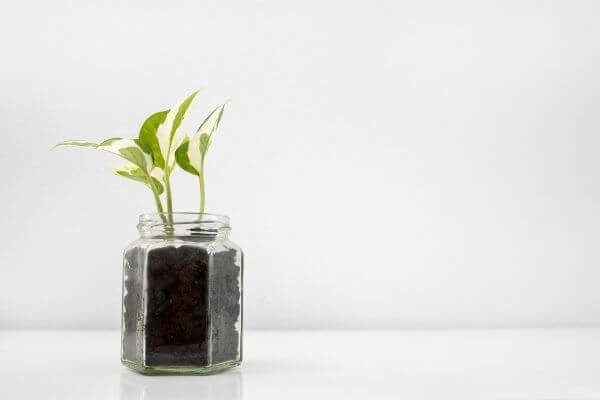
To ivy plant being propagated on the soil, follow these steps.
And also you will be needed a rooting hormone powder, which encourages the stem to sprout roots. Visit a good rooting hormone powder I found on Amazon by clicking here.
First, cover the stems ends with rooting hormone powder.
Then prepare a little paper cup or a pot with the soil and dip the stem. Don’t worry about the nutrition of the soil. Just put some garden soil.
After that add water as much as possible to keep the soil in moisture. Also keep the plant in partial shade.
Over time it will sprout new roots, leaves and turning for a little ivy plant around 6 to 8 weeks.
Thereafter you have permission to grow the ivy plant on a chain-link fence or wherever you like.
Rooting in the water
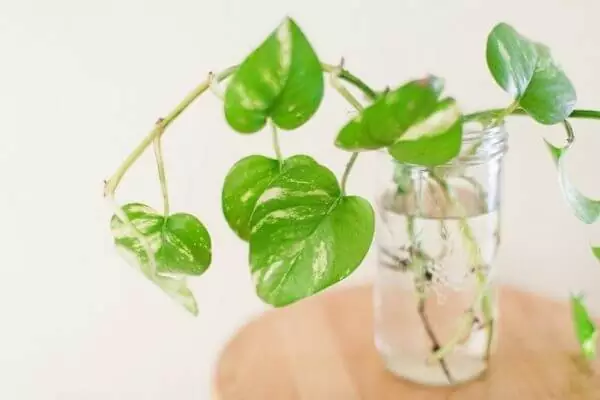
To root ivy plant in water you all have to do is, put the stem on to a water bowl without any leaves on it.
Also, keep it near a window or store it wherever it can have bright sunlight on it.
In few weeks you can see white roots are sprouting from the stem.
But according to gardeningknowhow.com plant will have a stronger rooting system when it grows on a solid medium like soil.
I’d like to recommend propagating ivy on the soil, rather than doing it on the water.
Transplanting ivy plants
Actually to transplanting ivy’s, you need no special guidelines.
You can find them from your nearby agriculture or garden shop in the early spring.
When you got the plant, there’s nothing special.
If you are willing to grow ivy on a chain link fence, just bury it from a little distance apart from the fence.
Step 1: Clean the ground and dig a hole
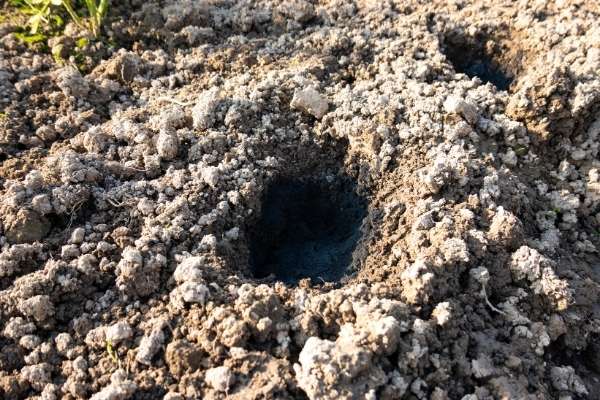
As the first step of growing ivy plant on a chain link fence, you should clean out the location that you wish to grow ivy.
But when you are choosing where to plant ivy, skip the areas which have too many stones on the soil.
Roots of the ivy plants are not much stronger and they need a clear soil to spread anywhere as they like.
So rake out all the stones and leaves above the ground.
Then you have to dig a hole to plant ivy cuttings or sow seeds on it.
Expertise recommendation is to dig that hole 1.5 feet apart from the chain-link fence. It will help to make the vine looking bushier while it running on the fence.
But based on the method you are using to grow ivy, the size of the holes may get different.
- If you are sowing seeds, dig 1 inch hole from your finger and do rest of the work.
- When you planting propagated stems, just dig a hole that is enough to cover all the sprouted roots on the stem.
- When you transplanting, a 4 – 6 inch deep hole will be suitable depending on the size of the plant.
Step 2: Prepare the soil
The next step of the process of growing ivy on a chain-link fence is to prepare the soil as healthier for the ivy plant.
Even ivy isn’t a heavy feeding variety, I also recommend you fertilize it. Because it will definitely help the plant to grow some more leaves and make the fence attractive.
Here’s how you do it.
As I told you before in this article, ivy is an ornamental plant that loves to grow on acidic soil.
So making the soil acidic by using acidic fertilizers and organic fertilizers like composts before planting ivy near the chain-link fence, is a good investment for a healthier and nicer plant for the next few months.
Now you have to consider about what to fertilize the ivy plant.
When you fertilizing the plant, you have to make sure that you also keep the acidity of the soil at a healthy level.
Therefore after considering these factors and my experience, I recommend you use a homemade or commercial compost mixture to fertilize ivy plants.
After you complete the above two steps, now you can do sowing seeds, planting the stem or transplanting the ivy.
Step 3: Watering to the ivy plant
I think as gardening lovers, you all know about the importance of consistent watering to a plant.
In fact, a plant like ivy which loves cold, moisture and humidity needs water more water on their roots than any other.
Here’s exactly how much water they need.
If you are growing an ivy plant in an area that has the required temperature and humidity, just 1 inch of water a week will be enough, if the sun isn’t drying water too quickly.
watering ivy on hard conditions
But if your area haven’t the exact required temperature, humidity and things drying up very quickly, you have to water your ivy plants more than usual.
I can’t say the exact amount of water your ivy plant needs to be grown on the chain-link fence, at this moment.
Even though I can give a clue. That is to keep watering the plant for being the soil moist as long as you can.
Tip – Use a shade cloth to cut down the evaporation on the soil. It will help the plant to keep moisture on the soil for longer.
And also you can use a drip irrigation system to water the ivy vines. It will make life easier than ever.
Because all you need to do is set the timer and just turn on the drip-irrigation horse.
Water drops will gently soak into the soil as deep as they can. Which also keeps the soil moist for a long time.
You can know how a drip irrigation system works, by reading this perfect guide.
Step 4: Train ivy plant to run on the chain link fence
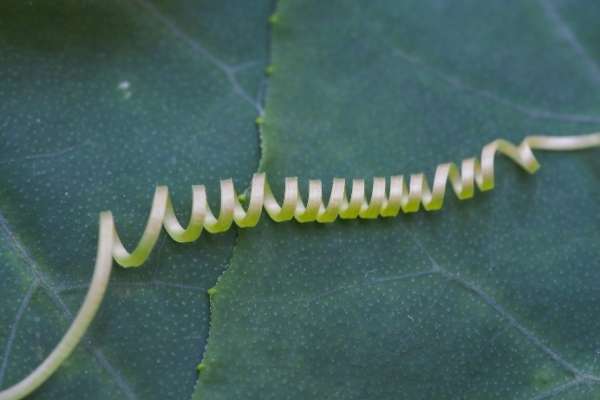
when we considering how to grow ivy on chain link fence, just planting them near the fence and looking at it will never help you to hide your chain link fence.
Because even ivy is a vine, it isn’t naturally adapted to grow on a fence located somewhere else.
So you should train ivy plants to grow in a chain link fence.
Actually, when we talking about training ivy on fences, training an ivy plant to grow in a chain-link fence is easier when comparing to a usual cement or wooden fence.
That’s because the wires on the fence will make it easy to wrap the vine around.
Actually, how do you train ivy on a fence? That’s what we are going to find out.
First, we have to wait until the ivy plant grows up to some longer.
Because we plant it 1.5 feet away from the fence, the stem should be long enough to complete that gap between the plant and the fence.
Once the plant has at least 1.5 feet long stem, you can start training to grow ivy plant on the chain-link fence.
Here’s the thing.
Ivy also have the little twines called tendrils. They can wrap around everything they touching.
So these tendrils are the main key to grow ivy on chain link fences.
When the ivy stem grows closer to the fence, you can wrap the tendrils around the wires of the fence to encourage them to run on the chain link fence.
While you using tendrils to keep the vine hanging on the fence, you can also customize the growing direction of the vine by tying up the stem onto the fence using twine or a cloth.
For example, if you want your ivy vine to be more extended on the fence, you can change the stem direction horizontally and tie it up gently with a twine.
So, like that you can train ivy vines to grow on chain link fence, which is one of an inexpensive ways to hide a chain link fence.
Care ivy plant on chain link fence
Growing ivy is not too hard. Because when they get into some long, they will grow up very quickly without any support.
But over time you should keep your attention on caring for the ivy plant on the chain-link fence.
Here are some points you should keep your eyes on when caring for an ivy plant.
Prune ivy vine

If you decided to grow ivy, as the answer for ” how to hide a fence with plants”, pruning is a really important process to you.
Because by pruning your ivy plant, you will have these advantages.
- Have more leaves in the plant
- Ivy plant will be extended all over the chain-link fence.
- Keep the vine and fence more attractive
So that’s why you should prune the ivy plant you’re growing on chain link fence.
Here’s how you do it.
First hold the stem you want to prune from a one hand. And take a small pruning scissor, sharp scissor or a garden knife to the other hand.
Come down where you need to prune the stem.
Then cut the stem from right above the leaf node. And remember that you are using something sharp to prune it.
Otherwise, tearing the stem doesn’t work in the right way.
Note – I recommend you to only prune ivy stems that overgrown on the chain link fence, except in a special condition like a fungal disease.
However prune as much as possible to keep your ivy plant growing neatly on the fence.
Diseases
As a plant that not required many nutrients to grow, the ivy plant is not often facing diseases.
Even though still there are some of them. And they could hurt you while you grow ivy on chain link fence.
Let’s find out them.
Yellow leaves
This can be seen very often than any other disease on ivy plants.
The main reason to turn leaves yellow on ivy plants is overwatering.
And over-watering caused a misunderstanding of the plant requirements.
Many gardeners flood in water to their ivy plants, by misunderstanding keeping the moisture of the soil for ivy vines.
So if you think you will also mess up things like that, use mulch. It doesn’t harm the plant and a great solution for over-watering.
However, what you gonna do with those yellow leaves?
Nothing special. Just cut them off.
Other diseases
Instead of over watering matter there are some other diseases can affect the growing of an ivy plant on a chain link fence.
Here are some of them,
- Bacterial leaf spot
- Fungal leaf spot
- Rhizoctonia root rot
- Aerial blight
Here’s the perfect guide that helps you to identify diseases on your ivy plant and treat them in the right way.
Ivy varieties to grow on chain link fences
People planting various kinds of ivy vines is one of the inexpensive ways to hide a chain link fence.

So now I’m gonna disclose you which ivy variety to grow on chain link fence.
And the most attractive thing is I found theses data by surveying over 40 active gardeners. They won’t lie you.
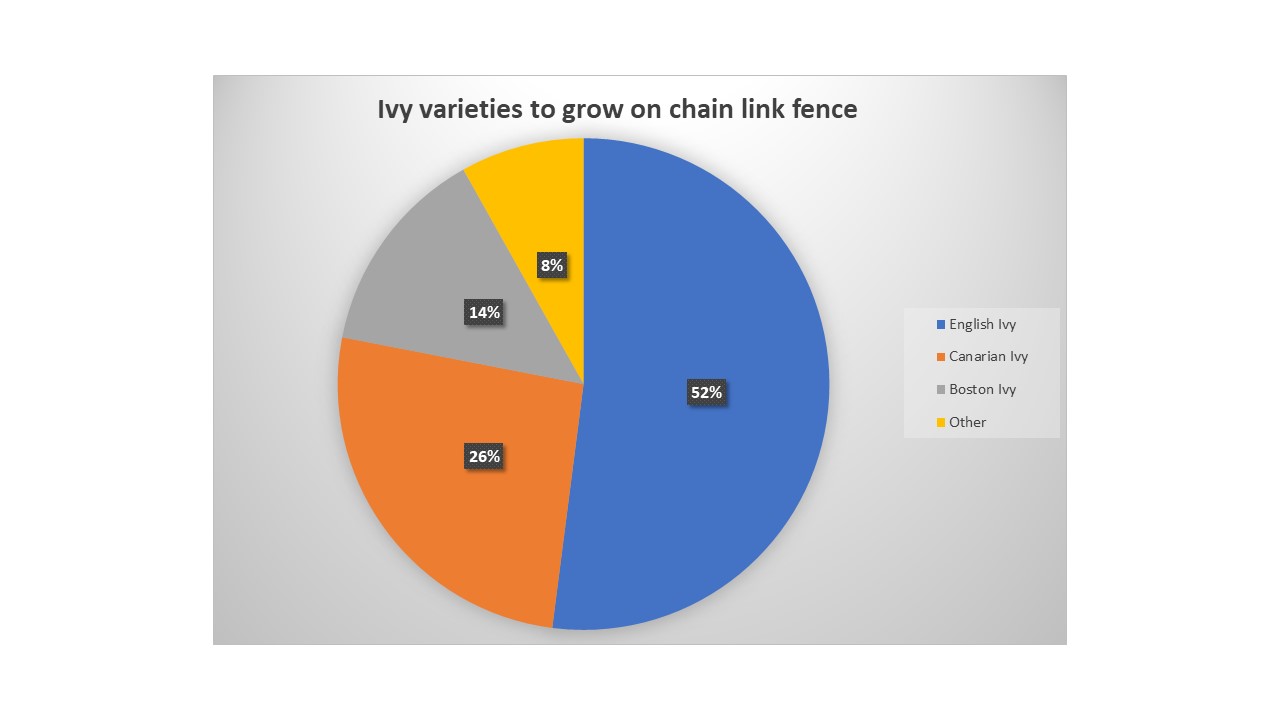
As to this graph, many people use English ivy to grow ivy on chain link fences.
And because they have been successful in growing them, I can recommend to you that English ivy is the best ivy variety to run on fences.
It’s not only contains easiness of growing. But also for me, English ivy is beautiful than any other variety.
An English ivy plant can even close to 80 feet and they spread along 20 to 30 feet.
Next, I would like to recommend also growing Canarian ivy as a creative and inexpensive way to hide a chain link fence.
They usually grow up to 30 feet of high, which is well enough to grow on a fence as a cover
If you want to see things working quickly my recommendation is to try Boston ivy on chain link fence.
They grow up really quickly. A Boston ivy plant reaches 10 feet in height in a growing season. And they end up growing 40 feet averagely.
However, many ivy varieties are growing well vertically, on a fence. But these 3 varieties are growing even better.
